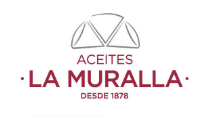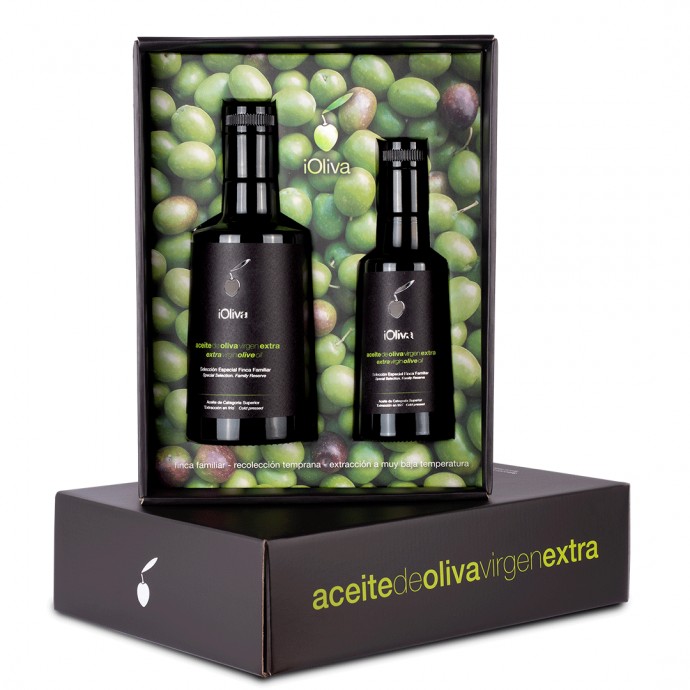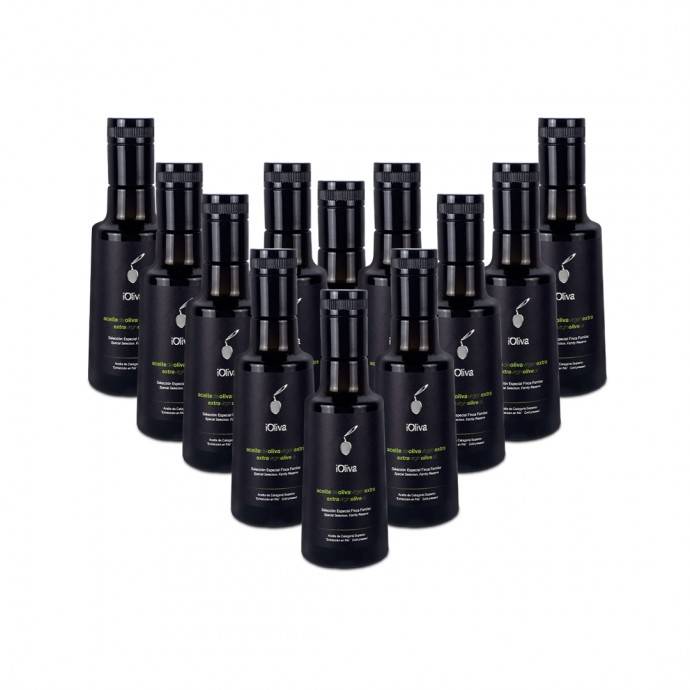
Refined oil. Definition and differences with unrefined oil
Refined oil plays a fundamental role in the oil industry. It is an inevitable product since in the harvest there is a good percentage of oil from olives that are deteriorated, from these damaged fruits can not be obtained an extra virgin olive oil as the quality of the oil will be poor and does not meet the requirements to obtain an EVOO. In this post we tell you in depth what refined olive oil is and what it is used for.
.jpg)
Definition of refined olive oil
As we said before, not all the olives that are harvested are at their optimum point. There is a good percentage of the harvest that are damaged either by the affection of some pest, because they have fallen to the ground, because they are overripe or because of meteorological agents; very low temperatures, hydric stress among others.
The fact that the olives are damaged does not mean that they do not contain oil, but rather that the oil they contain is of much poorer quality.
When olives are in their optimum state, we can produce extra virgin olive oil simply through mechanical processes without the need to go through a refining process. Let us not forget that olive oil is the only type of oil that can be consumed unrefined, which is why we often use the term "olive juice ” because it is really the juice extracted directly from the olives.
However, when we work with this type of damaged olives we have no choice but to refine the oil in order to be able to consume it, thus losing most of its properties and obtaining an oil that is far removed from the exceptional characteristics of EVOO.
This oil is produced in the oil mills and is usually called lampante olive oil. Once produced, it is transported to the refineries to continue the process.
How refined olive oil is obtained
In order to obtain refined olive oil, it is necessary to go through several processes. The first step is to transport the olive oil to the refineries, once there:
- Purification stage: By adding water and phosphoric acid, certain compounds such as phospholipids and gums are removed, which can cause sticky substances to appear on the containers, making it unattractive to the consumer. However, other beneficial compounds, such as some proteins, are also removed during this process.
- Neutralization stage: In this stage, the acidity of the oil is removed. This is achieved by the addition of caustic soda. Thus, the chemical reaction of neutralization takes place, in which the fatty acids with the caustic soda form soaps that are separated from the oil by centrifugation, leaving the acidity of the oil practically at zero (neutral). This process also implies the elimination of a large part of the carotenes and polyphenols, precursors of Vitamin A, and antioxidants, normally present in Virgin Olive Oils.
- Washing stage: Washing is carried out with the use of hot water, thus eliminating the remains of soaps from the neutral oil.
- Drying stage: In this stage, we subject the neutral and humid oil to drying at high temperature and in a vacuum atmosphere.
- Decolorization stage: It consists of the elimination of the substances responsible for the color. These are mainly the carotenoids.
Types of refined oils
Refined sunflower oil
Sunflower oil is obtained by pressing the seeds of the Helianthus annus plant. It is often used in the food industry for frying as it has a fairly high smoke point. It is also widely used for mayonnaise because of its mild flavor.
Refined olive pomace oil
It is the oil extracted from the pomace. Pomace is a by-product of olive oil production. After processing, the small percentage of olive oil that is refined is extracted and marketed as olive pomace oil. In the food industry it is mainly used for frying.
Refined coconut oil
This oil is obtained from the dried coconut pulp. The oil is obtained by pressing and subsequent refining, bleaching and deodorization. It can be used for food, but it is most commonly used for cosmetics.
Refined soybean oil
It is the most widely used vegetable oil in the United States, and its popularity is increasing all over the world, it is suitable for food consumption. It is one of the most widely produced oils in the world, together with palm oil. It is used in all sectors, from resins and paints, cosmetics, animal feed, etc.
Refined corn oil
Corn oil is a type of vegetable oil obtained from corn. It is widely used in cooking and has a mild flavor. It is used for cooking at high temperatures and in various food products.
Differences with extra virgin olive oil
The differences between extra virgin olive oil and refined olive oil are very noticeable.
Extra virgin olive oil (EVOO) is a type of olive oil of the highest quality, obtained directly from olives by mechanical processes, without any type of refining or chemical treatment. Some of the most outstanding characteristics of EVOO are the following:
Purity: It does not contain additives or preservatives. It is obtained exclusively by physical means such as cold pressing.
Acidity: It has a low level of acidity, less than 0.8 degrees, which indicates a high quality of the oil and the olives used.
Taste and aroma: It has a fruity flavor, with bitter and spicy notes depending on the variety of olive and its ripeness. The aroma is fresh and can have herbaceous, fruity or floral touches.
Health benefits: It is rich in antioxidants and healthy fats, such as monounsaturated fatty acids, which contribute to reduce bad cholesterol (LDL) and increase good cholesterol (HDL), being a key part of the Mediterranean diet.
As we have been commenting throughout the post refined olive oil lacks all these characteristics, however, it is a product that has great relevance in the industry as it is used to mix with extra virgin olive oils and market it under the name “olive oil”. Paradoxically, Spain being the best producer of extra virgin olive oil is the country where “olive oil” is most consumed.













